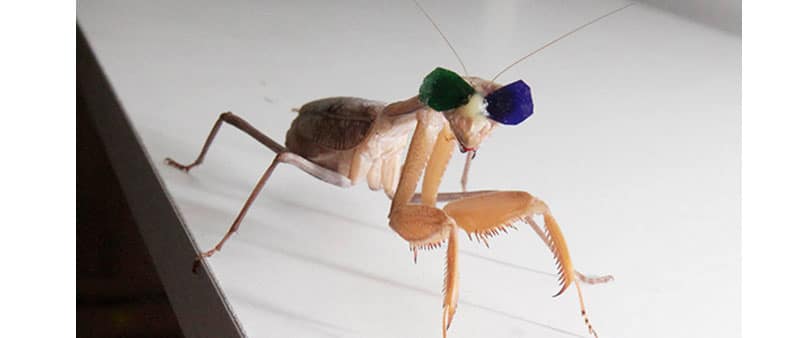New Form of 3D Vision Discovered in Praying Mantises
Wednesday, February 28 2018 | 00 h 00 min | Vision Science
By outfitting praying mantises with miniature glasses, researchers have revealed a new form of 3D vision that could lead to simpler visual processing for robots.
While common in many more complex animals such as humans, owls and horses, praying mantises are the only insect known to have stereo vision. This makes their unique eyes and system of vision worth studying, because these techniques of life can be reimagined as visual sensored in drones and robots.
Researchers at Newcastle University in the UK wanted to learn how praying mantis vision worked, so they fitted a miniature pair of 3D glasses over a praying mantis’s eyes using beeswax and displayed moving and static 3D images, to simulate prey for the mantis.
What they discovered was that mantises could barely detect 3D still images, unlike humans who have excellent static 3D vision, but could very accurately detect moving images, even when the two eyes were sent completely different pictures, much better than humans could.
“This is a completely new form of 3D vision as it is based on change over time instead of static images,” said behavioural ecologist, said Dr Vivek Nityananda at Newcastle University. “In mantises it is probably designed to answer the question ‘is there prey at the right distance for me to catch?’”
Dr Ghaith Tarawneh, an engineer, added, “Many robots use stereo vision to help them navigate, but this is usually based on complex human stereo. Since insect brains are so tiny, their form of stereo vision can’t require much computer processing. This means it could find useful applications in low-power autonomous robots.” Their results were published in the February issue of Current Biology.






